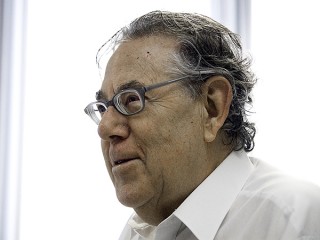
Paul J. Crutzen biography
Date of birth : 1933-12-03
Date of death : -
Birthplace : Amsterdam, Netherlands
Nationality : Dutch
Category : Science and Technology
Last modified : 2011-10-07
Credited as : Chemist, Nobel Prize in Chemistry, Ozone depletion
0 votes so far
Crutzen is best known for his research on ozone depletion. He lists his main research interests as "Stratospheric and tropospheric chemistry, and their role in the biogeochemical cycles and climate". He currently works at the Department of Atmospheric Chemistry at the Max Planck Institute for Chemistry, in Mainz, Germany the Scripps Institution of Oceanography at the University of California, and at Seoul National University, South Korea. He was also a long-time adjunct professor at Georgia Institute of Technology and research professor at the department of Meteorology at Stockholm University, Sweden.
Dutch scientist Paul J. Crutzen followed an unusual academic trajectory. His grade school education was interrupted by the Nazi occupation of his native Netherlands, and his high school test scores were too low to earn a university scholarship, so he instead attended technical college, where he majored in civil engineering. He worked in that field for several years before being hired in 1959 as a computer programmer at the University of Stockholm, despite having no training or experience with computers. He caught on quickly to the mathematical intricacies of early programming, and launched a second career constructing early modeling software for the university's meteorological institute. In performing this work, he was drawn to the science of meteorology, and began attending related classes at the University, earning his doctorate in 1968 and beginning his third and most successful career, as a meteorologist.
He was the first scientist to recognize that nitrous oxide, produced by the increasing use of high-nitrogen fertilizers and fossil fuel powered engines, was a contributing factor to depletion of the ozone layer, a stratospheric range about twenty miles above the Earth's surface. Crutzen showed how the ozone layer is formed and destroyed, and his 1970 research showed that ultraviolet radiation in the ozone layer reacts with nitrous oxide, converting the ozone to molecular oxygen and thus leaving the planet and its occupants increasingly vulnerable to the effects of ultraviolet radiation. He won the Nobel Prize for Chemistry in 1995, shared with Mario J. Molina and F. Sherwood Rowland, who studied chlorofluorocarbons.
He also modeled the Mount Pinatubo volcanic eruption of 1991 to propose that atomic warfare could cause a "nuclear winter" effect, a theory later popularized by Carl Sagan. In 2006 he proposed a controversial but bizarrely plausible geo-engineering response to global climate change, in which sulfur would be released into the upper atmosphere to, hopefully, block some of the sun's light and heat from reaching the planet.
Awards and honors:
APS Leo Szilard Award 1985
Tyler Prize for Environmental Achievement 1989
Volvo Environmental Prize 1991
Nobel Prize for Chemistry 1995 (with Mario J. Molina and F. Sherwood Rowland)
Grand Federal Cross of Merit Order of Merit of the Federal Republic of Germany 1996
H. Julian Allen Award 1998
Science Reviewing Editor (1993-99)
US Official National Center for Atmospheric Research (1974-80)
US Official National Oceanic and Atmospheric Administration, Aeronomy Laboratory (1974-77)
Home Construction Bureau, City of Gaevle, Sweden (1958-59)
Engineering Dept, City of Amsterdam (1954-58)
Academia Europaea 1988
Accademia dei Lincei 1997
American Academy of Arts and Sciences Foreign Member, 1986
American Geophysical Union Foreign Member, 1986
American Meteorological Society Foreign Member, 1997
American Philosophical Society International Member, 2007
European Academy of Arts, Sciences and Humanities 1996
European Geophysical Society 1997
European Geosciences Union 2004
European Space Research Organisation Fellowship, 1969-71
German Academy of Sciences Leopoldina Foreign Member, 1991
National Academy of Sciences Foreign Member, 1994
Pontifical Academy of Sciences 1996
Royal Netherlands Academy of Sciences 1990
Royal Society Foreign Member, 2006
Royal Swedish Academy of Engineering 1991
Royal Swedish Academy of Sciences 1991
Russian Academy of Sciences Foreign Member, 1999
Swedish Meteorological Society 2000
World Academy of Art and Science 2006
World Innovation Foundation 2002
Polish Ancestry
German Ancestry
Dutch Ancestry
Asteroid Namesake 9679 Crutzen
















